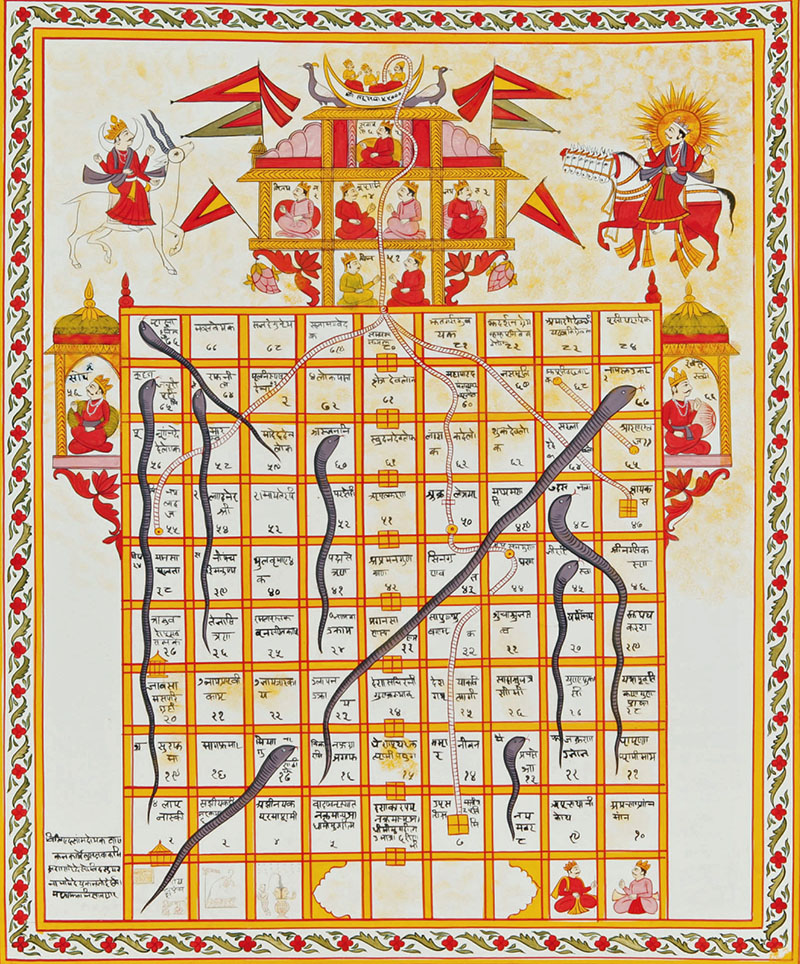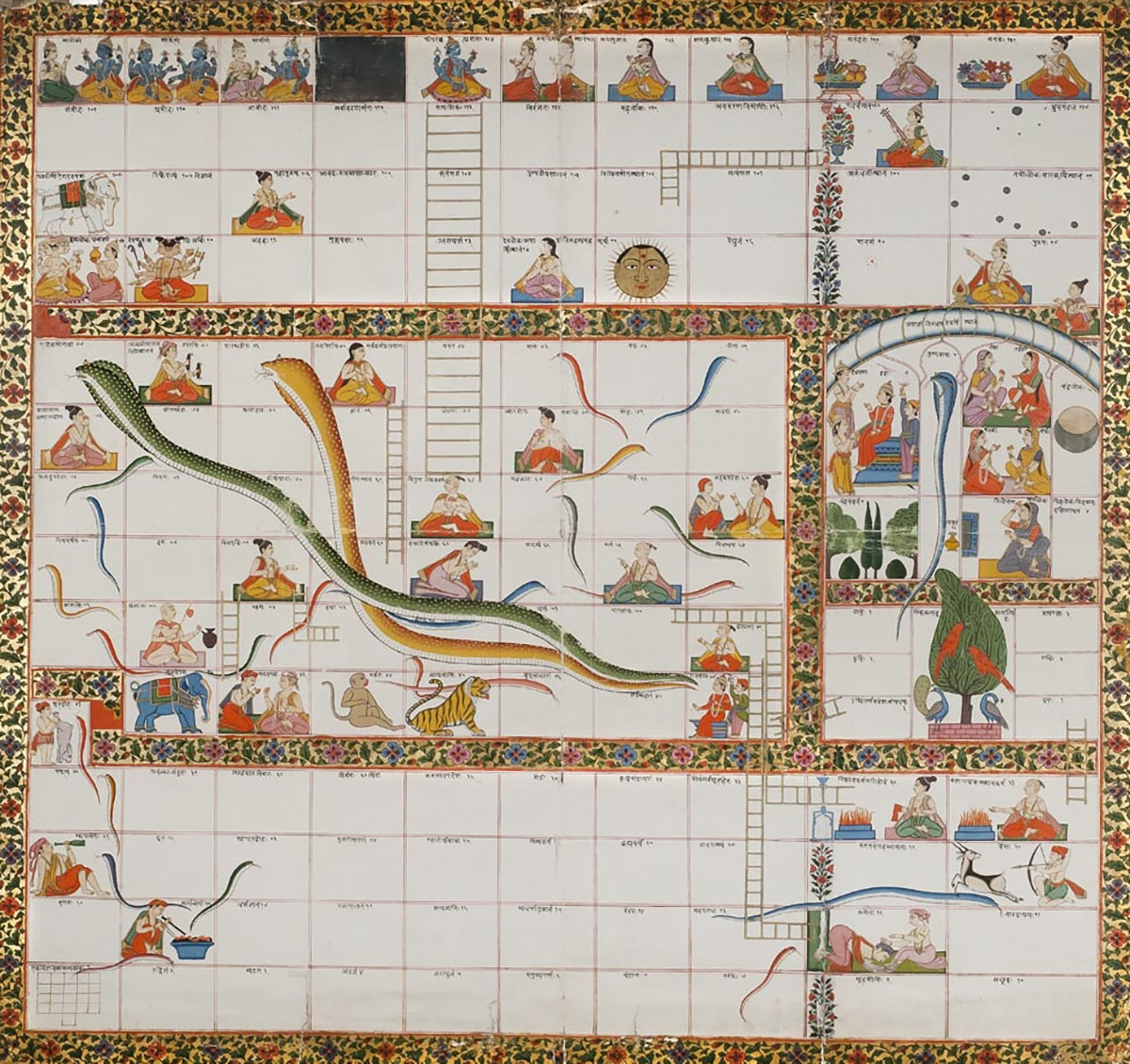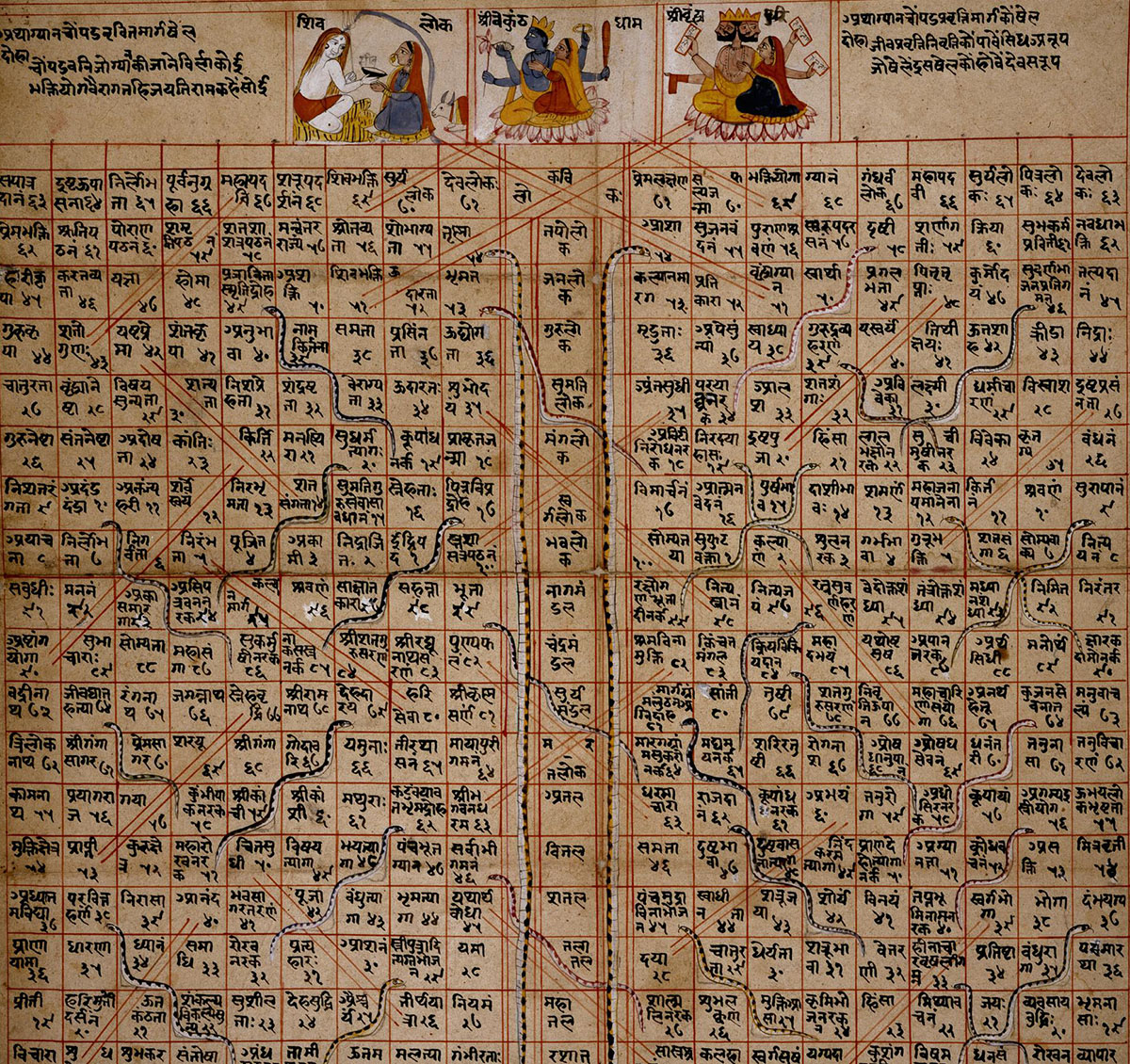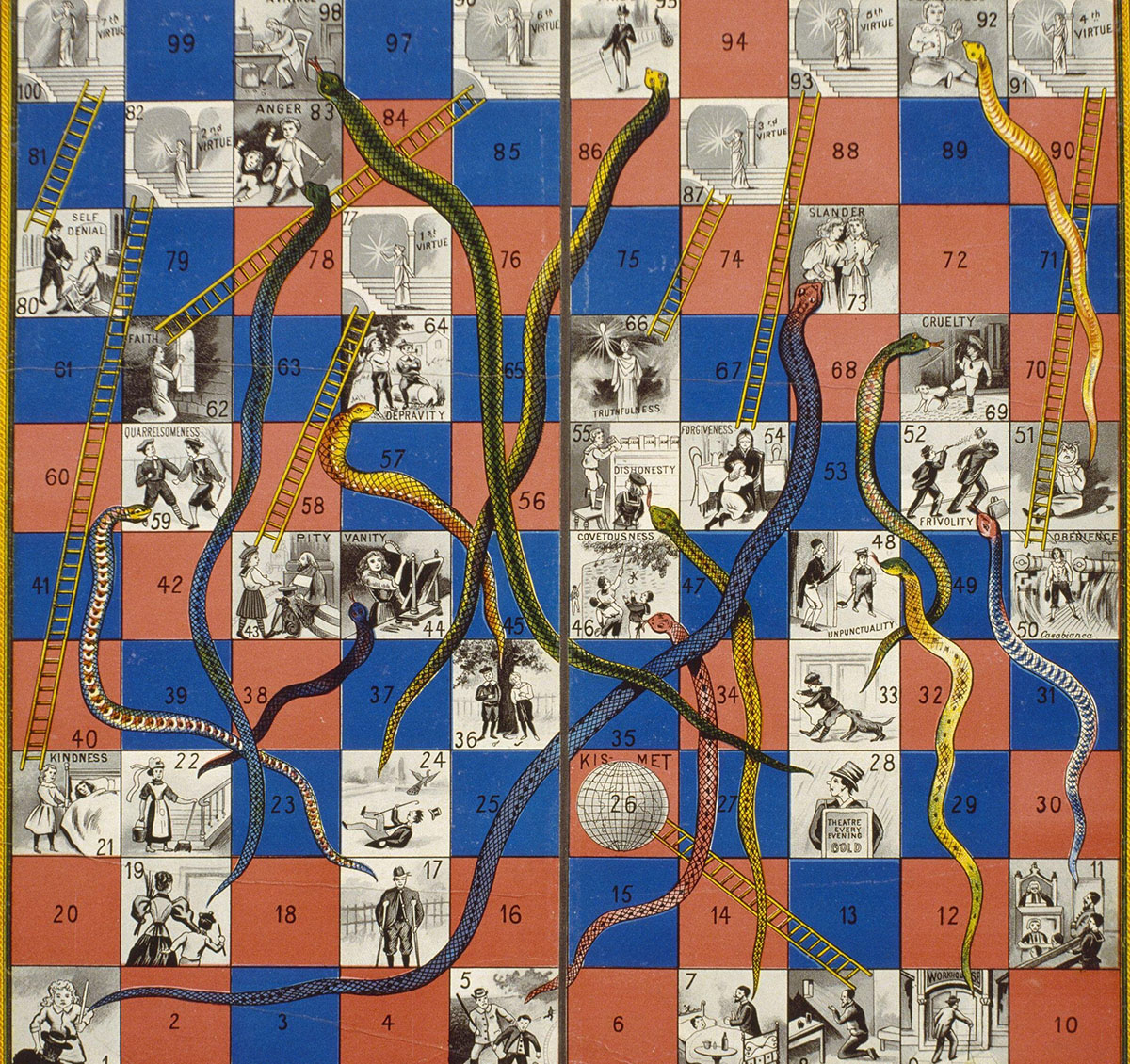ARTICLE
Gyan Chaupar
The snakes and ladders in gyan chaupar function as karmic devices, either thwarting or aiding a player’s efforts to reach moksha. To emphasise this, the squares from which the tokens either ascend or descend were labelled with names of various virtues or flaws. The positive attributes listed were dependability, asceticism, faithfulness, generosity and knowledge, while the negative attributes and crimes included rebelliousness, vanity, crudeness, theft, lust, debt and violence. These concepts were taken from Jain and Hindu theology, and thus also included ideas that did not have an equivalent in later versions of the game that used Victorian moral codes — such as maya or the illusion of the material world, and dharma, or divinely ordained duty. The squares on either end of a snake or a ladder were often related, illustrating, for instance, the link between ego and illusion, or devotion and paradise. In some boards, there was a prescribed order to a player’s moral progress, meaning that a sudden ascension to a particular square (such as Brahmaloka, or the abode of Brahma) had to be followed by a descent from a subsequent square down a snake (to prithvi, or earth) at least once in the game. In such cases, players were required to land on such squares with an exact roll of the dice and could not move past them. The game, as a whole, was meant to educate players on which traits and practices were morally desirable, how these would be rewarded, and what consequences lay in store for negative habits. The number of snakes was typically much larger than that of ladders — often twice as many — to underscore the difficulty of the path to enlightenment.
The gameplay of gyan chaupar is as follows: each player has a token and moves between numbered squares from the bottom to the top of the board, according to the roll of the dice or, in older versions, cowrie shells. Snakes and ladders function as conduits between squares on different vertical levels: if a token lands on a squares at the head of a snake, it immediately descends to the square containing the snake’s tail, and if it lands at the foot of a ladder, it ascends to the topmost rung. The objective of the game was to reach the last square at the top and exit the game.
In the eighteenth and nineteenth centuries, British officers took a number of contemporary Indian gyan chaupar boards to England, where they were examined and exhibited. A few unique boards following the Jain or Hindu design were also commissioned by British officers as collectibles. It was not until the 1890s, however, that gyan chaupar began to be sold as a children’s game in Britain, under the name ‘Snakes and Ladders’. While the British version retained some emphasis on ideas of morality — with illustrations of good and bad deeds on the squares that bookended each ladder or snake — it did away with the spiritual connotations and nuances of the Indian version that would have been puzzling to a British player, simplifying these into the more familiar Victorian templates of good and evil. Later, in 1943, the game was introduced in the USA by Milton Bradley under the name ‘Chutes and Ladders’, as the company felt that the image of snakes would scare children away. Other versions of the game include the German Leiterspiel, which used pictures of circus animals.
Today, contemporary versions of the game have done away with the moral element altogether, and are now played as a game of random chance. Medieval-era gyan chaupar boards are housed in the collections of the National Museum, New Delhi; the Rajasthan Oriental Research Institute, Jodhpur; the Calico Museum of Textiles, Ahmedabad; and the British Library, London.
Bibliography
Bierend, Doug. “The Timelessness of Snakes and Ladders.” Medium. October 19, 2015. https://medium.com/re-form/the-timelessness-of-snakes-and-ladders-4ae7d205a4e7.
Chanda-Vaz, Urmi. “Indians Are Reviving an Ancient Version of Snakes and Ladders, in Which Winning Isn’t the Point.” Scroll.in, June 29, 2017. https://scroll.in/magazine/837691/indians-are-reviving-an-ancient-version-of-snakes-and-ladders-in-which-winning-isnt-the-point.
Goswamy, B. N. “Different Snakes, Different Ladders.” The Sunday Tribune, November 26, 2000. https://www.tribuneindia.com/2000/20001126/spectrum/art.htm.
Rao, V. Venkata. “Who Invented the Board Game Snakes and Ladders?” The Times of India, October 12, 2008. https://timesofindia.indiatimes.com/who-invented-the-board-game-snakes-and-ladders/articleshow/3585003.cms.
Slesin, Suzanne. “At 50, Still Climbing, Still Sliding.” The New York Times, July 15, 1993. https://www.nytimes.com/1993/07/15/garden/currents-at-50-still-climbing-still-sliding.html.
Srivastava, Mohit. “Gyan Chaupar: The Game That Became Snakes and Ladders in British India.” Sahapedia. August 15, 2019. https://www.sahapedia.org/gyan-chaupar-game-became-snakes-and-ladders-british-india.
Topsfield, Andrew. “The Indian Game of Snakes and Ladders.” Artibus Asiae 46, no. 3 (1985): 203–26. https://doi.org/10.2307/3250203.
Vinay, Adarsh. “Snakes & Ladders Was Invented in India but the Original Version is Nothing Like What It’s Now.” ScoopWhoop, July 10, 2020. https://www.scoopwhoop.com/snakes-ladders-invented-in-india/.










